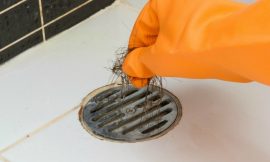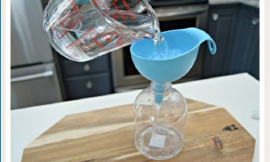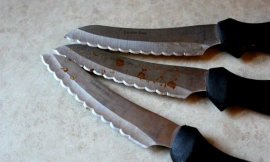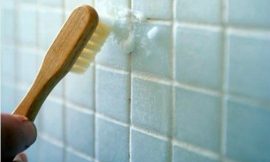
Mold in closets isn't just unsightly—it can pose serious health risks and damage your belongings. Did you know that over 70% of homes have at least some degree of mold? This pervasive threat can thrive in the damp, dark corners of our wardrobes, making it crucial to address it promptly. In this guide, I'll share my top strategies on how to effectively remove mold from both closet walls and fabrics, ensuring that your cherished clothes and personal items remain safe and sound. Let's tackle this annoying issue together!
How to Identify Mold in Your Closet
Signs of mold growth
Mold can be sneaky, but there are clues that can help you spot its presence. Look for visual cues such as black, green, or white patches on surfaces. Additionally, a musty odor is a key indicator—if your closet smells damp and sour, it's time for a closer inspection.
Common areas for mold
Certain spots in your closet are more prone to mold growth. Pay special attention to areas where clothing might touch the walls, like corners or behind shelving. Additionally, spaces where moisture tends to accumulate, such as near leaks or poorly ventilated corners, are prime candidates for mold.
Health risks of mold exposure
It's important to recognize that mold isn't just an aesthetic issue; it can also pose health risks. Exposure to mold can lead to allergic reactions, respiratory problems, and even more severe health complications in sensitive individuals. If you suspect mold growth, addressing it promptly is crucial for your well-being.
Preparing to Remove Mold
Gather necessary supplies
Before you dive into mold removal, create a checklist of essential tools and cleaning products. Common supplies include a scrub brush, sponges, a vacuum with a HEPA filter, and cleaning solutions like vinegar or commercial mold removers.
Protective gear
Safety should never be compromised. Wear gloves, masks, and goggles to protect yourself from mold spores and cleaning chemicals during the removal process. Taking these precautions is key to ensuring a safe and effective cleanup.
Ventilation is key
Ventilating the area before and during the cleaning process is vital. Open windows and doors to allow fresh air to circulate, helping to minimize your exposure to mold spores and any fumes from cleaning products.
Step-by-Step Guide to Remove Mold from Closet Walls
Initial cleaning
Start with some pre-cleaning to remove loose spores. Dusting and vacuuming the area helps to decrease the concentration of mold particles before you begin scrubbing the affected surfaces.
Choosing the right cleaning solution
When it comes to cleaning solutions, you have options. DIY solutions, like vinegar and baking soda, are effective and safe for home use. Commercial products may also offer strong options but ensure you read labels and choose ones designed specifically for mold removal.
Proper scrubbing techniques
Effective scrubbing is crucial in your battle against mold. Use a scrub brush or sponge with the cleaning solution, applying firm pressure without damaging the wall surface. It's essential to focus on not just the visible mold but also on areas that may be hidden.
Rinse and dry
Once you've scrubbed the area, don't skip rinsing the walls thoroughly to remove any remaining cleaning solution or mold debris. After rinsing, make sure the area is entirely dried. This step is critical because lingering moisture can lead to future mold growth.
How to Treat Moldy Fabrics
Assessing damage
Take a close look at the fabrics affected by mold. Determine whether the damage is superficial and they can be salvaged or if the mold has penetrated deeply enough that the items need to be discarded.
Soaking methods
If the fabric is recoverable, soaking can be an effective way to kill mold spores. Different soaking solutions work for various fabric types—consider using vinegar for cottons or specialized mold removers for more delicate items.
Washing and drying
When it comes to washing, opt for the highest water temperature that's safe for the fabric type. This helps ensure the mold spores are eliminated. Follow up with thorough drying; if possible, use direct sunlight, as UV rays are also effective against mold.
Preventative care
To prevent mold from returning on fabrics, store items in breathable containers and consider using moisture absorbers. Keeping your closet dry and ventilated will help protect your favorite garments from mold in the future.
Preventing Future Mold Growth
Humidity control
Humidity control is your first line of defense against mold. Consider investing in a dehumidifier to maintain an optimal indoor humidity level, ideally between 30-50%.
Regular cleaning practices
Incorporate periodic checks and cleanings of your closets into your routine. A quick inspection can catch early signs of mold and help you maintain a healthy environment.
Proper storage solutions
How you store clothes matters when it comes to mold prevention. Use airtight containers for off-season clothing and avoid overcrowding your closet, which can limit air circulation. Proper organization can go a long way in inhibiting mold growth.
Conclusion
Removing mold from closet walls and fabrics is not just about cleaning—it's about giving your space a healthier, fresher feel. Whether you’re dealing with minor spots or a more serious infestation, following the right steps can make all the difference. Don’t wait for the mold to take over—start your cleanup today! If you found this guide useful, consider sharing it with friends or family who could benefit from a mold-free home!






